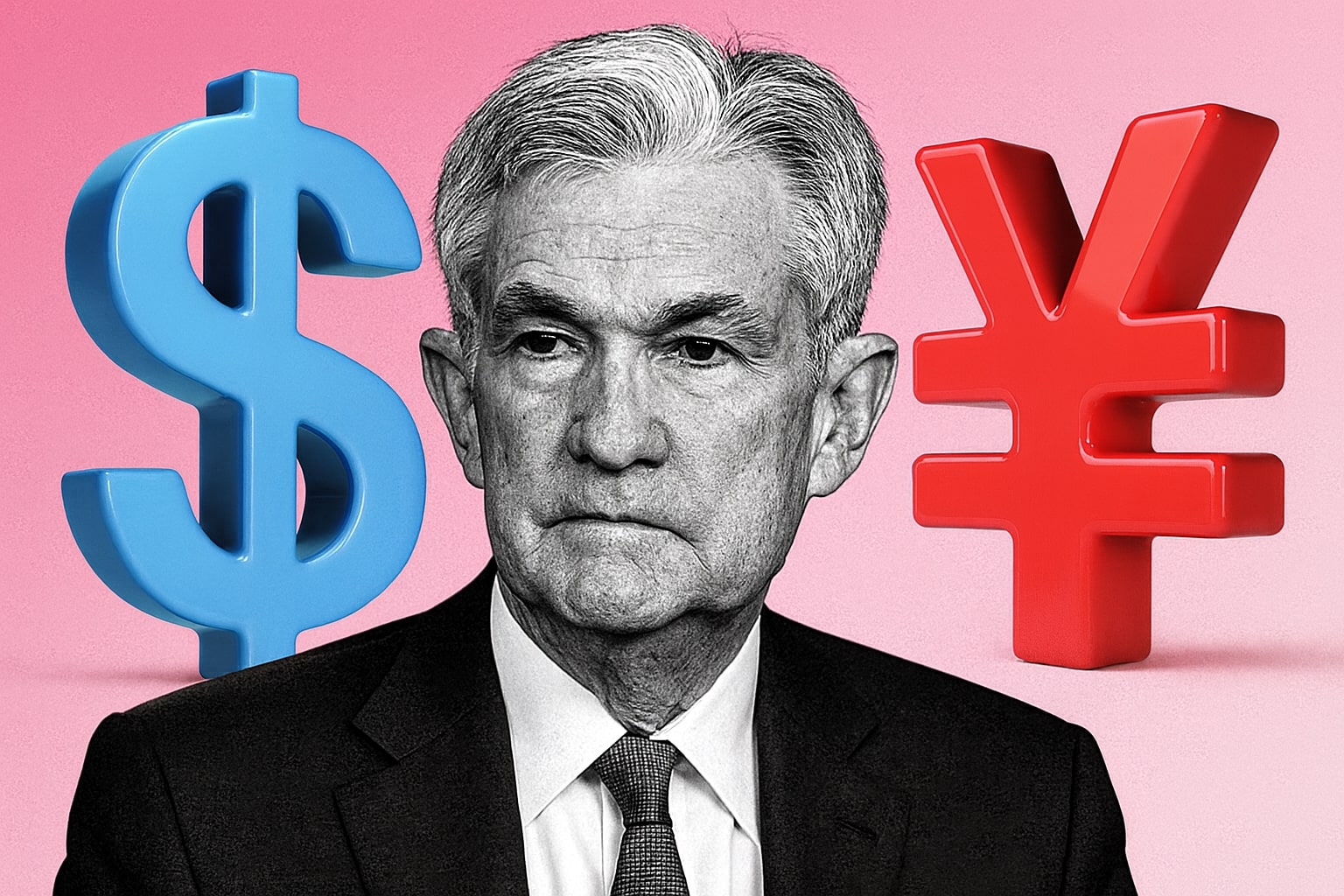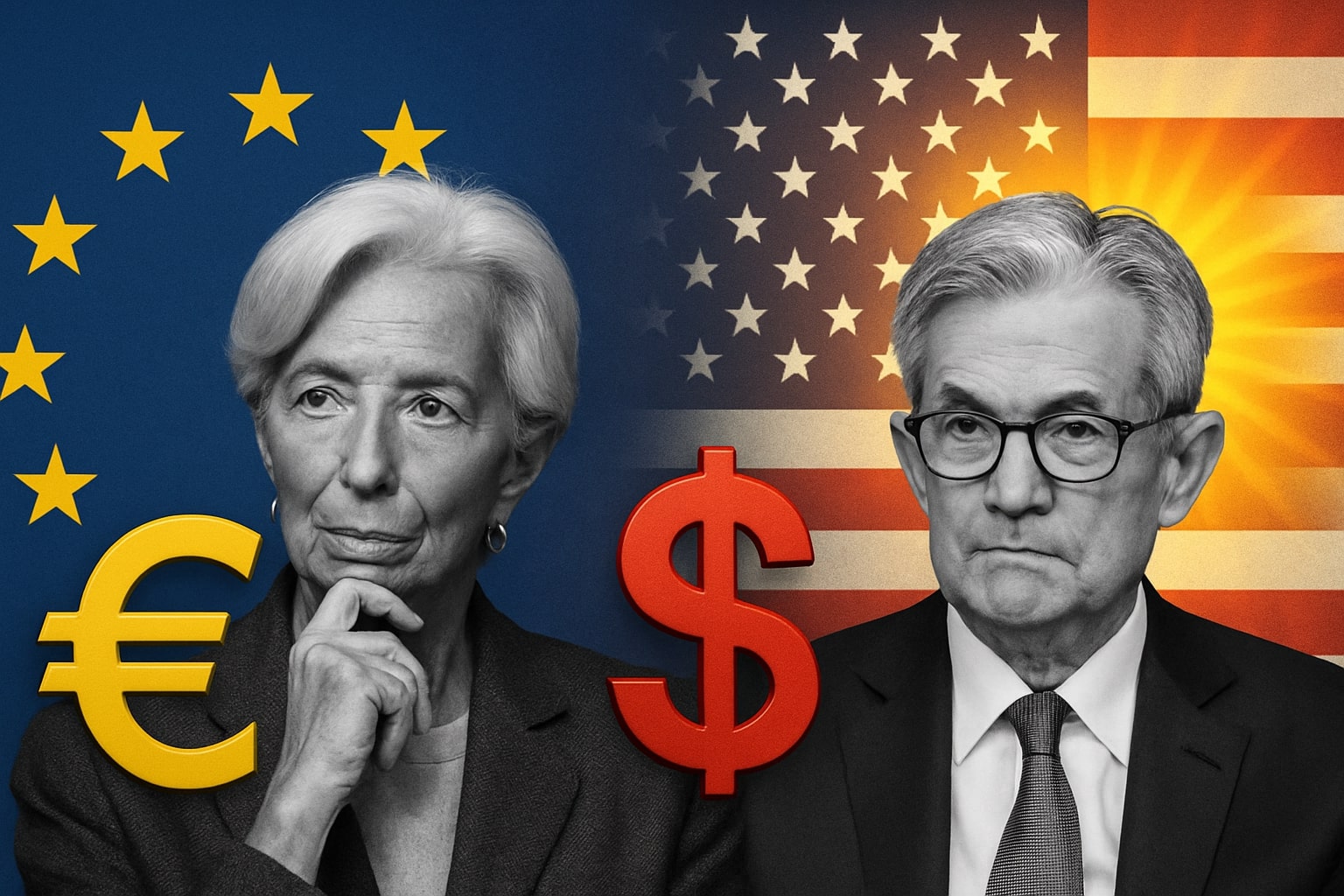
USD/JPY Price Forecast - Yen Rallies to 156.54 as Rising JGB Yields
The Japanese Yen weakens sharply as 10-year JGB yields spike to 1.77%, while the U.S. Dollar (USD) gains ahead of key FOMC and NFP events | That's TradingNEWS
USD/JPY (Dollar–Yen) Extends Rally To 156.54 As JGB Yields Surge And Yen Weakens Further
The USD/JPY pair continues its powerful advance, trading near 156.54, its highest level since January, as a combination of surging Japanese Government Bond (JGB) yields and persistent U.S. Dollar (USD) strength drives the Yen into deeper weakness. The 10-year JGB yield spiked to 1.77%, the highest in 17 years, intensifying market expectations that Japan’s fiscal expansion under Prime Minister Sanae Takaichi will further weigh on the currency. Investors are reacting to the government’s planned stimulus package, which is expected to surpass last year’s ¥13.9 trillion supplementary budget, stoking fears of rising debt and inflationary risks. Despite verbal interventions from Japan’s Ministry of Finance, there are no signs of active currency defense, allowing the bullish momentum on the dollar side to continue unimpeded. The U.S. Dollar Index (DXY) climbed to 99.75, adding broad-based support for the greenback as investors awaited the FOMC minutes and Non-Farm Payroll (NFP) data, both key triggers for rate expectations heading into December.
Technical Structure Strengthens As USD/JPY Breaks Above Key Moving Averages
From a technical standpoint, the USD/JPY uptrend remains solid, holding firmly above its 21-, 50-, and 100-day Simple Moving Averages (SMAs), confirming a well-established bullish trend. Since its breakout above the 150.00 psychological threshold in early October, the pair has maintained a clear pattern of higher highs and higher lows. The latest surge followed a bullish gap fueled by reports of Japan’s leadership transition and subsequent fiscal promises. The Relative Strength Index (RSI) remains elevated at 72, indicating overbought conditions, yet there are no visible signs of exhaustion or bearish divergence. Key resistance lies at 156.75, the January 23 swing high, with a break above that potentially targeting 157.70, the 2025 high close. Immediate support sits near 155.00, followed by the 21-day SMA at 153.86, forming the near-term defense zone for buyers.
Monetary Policy Divergence Between Fed And BoJ Fuels The Dollar’s Advantage
Policy divergence remains the central driver of USD/JPY’s strength. While the Federal Reserve maintains rates between 3.75%–4.00% following its 25 basis point cut in October, the Bank of Japan (BoJ) continues to suppress yields through its Yield Curve Control (YCC) mechanism. Despite recent tweaks, the BoJ’s stance remains ultra-accommodative compared to other major central banks. Japan’s inflation rate sits around 2.6%, but policymakers remain hesitant to tighten policy amid sluggish wage growth and fragile consumption. In contrast, the United States continues to exhibit labor market resilience and robust consumer data, reinforcing the dollar’s yield advantage. With the NFP report on the horizon and markets pricing only a 48% chance of a Fed cut in December, traders remain long USD/JPY ahead of potential confirmation of the Fed’s higher-for-longer strategy.
Fiscal And Geopolitical Pressures Compound Yen Weakness
Fiscal stress and regional political tensions further exacerbate Yen depreciation. The recent escalation of a Japan–China diplomatic spat following remarks by Prime Minister Takaichi regarding Taiwan has worsened investor sentiment toward Japanese assets. Beijing’s warning of “serious countermeasures” rattled bond markets, pushing yields higher and weakening the Yen as risk premiums widened. Domestically, Japan’s growing debt burden—already exceeding 260% of GDP—raises long-term sustainability concerns. Investors fear that any additional fiscal stimulus without monetary tightening could further erode the Yen’s credibility. Meanwhile, rising U.S. Treasury yields and sustained demand for dollar-denominated assets continue to attract global capital, amplifying the upward bias in USD/JPY.
Market Volatility Ahead Of Non-Farm Payrolls And FOMC Minutes
The market now pivots to imminent macro events. Traders are preparing for heightened volatility as the Non-Farm Payrolls (NFP) data approaches, which could determine whether the Fed remains cautious or resumes tightening rhetoric. Strong employment data could push USD/JPY toward the 157.19–157.70 resistance zone, aligning with the 100% Fibonacci extension of the rally from the October lows. On the contrary, a weaker NFP print could trigger short-term profit-taking toward 155.00 or even 154.00. The FOMC minutes, due at 19:00 GMT, will provide deeper insight into the central bank’s internal debate—particularly between inflation hawks advocating patience and doves pressing for earlier cuts.
Technical Outlook: Resistance Test And Ascending Channel Support
Technically, USD/JPY trades within an ascending pitchfork structure formed off its October lows. The upper boundary converges near 156.40–156.70, while the median line intersects around 155.20. A confirmed breakout above 156.43 would signal a potential acceleration phase, setting sights on the 157.70 yearly resistance. On the downside, a break below 155.00 could expose deeper retracement toward 153.27, where the October range high intersects with the 50-day moving average. Momentum remains tilted bullish, supported by increasing open interest and strong inflows from hedge funds and Japanese importers hedging USD liabilities.
Read More
-
SCHD ETF Price at $27: Can SCHD’s 4% Yield and 9.15% Dividend Growth Beat High-Yield Covered Call ETFs?
15.12.2025 · TradingNEWS ArchiveStocks
-
XRP ETFs Close on $1B Inflows as XRPI at $10.92 and XRPR at $15.52 Hit 52-Week Lows
15.12.2025 · TradingNEWS ArchiveCrypto
-
Natural Gas Price Forecast: NG=F Holds the $4 Floor as Oversupply Clashes with 2026 LNG Demand
15.12.2025 · TradingNEWS ArchiveCommodities
-
USD/JPY Price Forecast - Dollar to Yen At 155: Yen Strength Builds As BoJ Hike And NFP Collide
15.12.2025 · TradingNEWS ArchiveForex
Investor Positioning And Market Sentiment Favor Dollar Dominance
CFTC data shows leveraged funds expanding net long positions on USD/JPY for the fourth straight week, reflecting broad confidence in the pair’s continuation higher. Meanwhile, retail traders remain heavily short, with the long-to-short ratio at 0.42, signaling a contrarian bullish setup. Volatility indices tied to Yen options remain muted, suggesting market participants are not aggressively hedging downside risk. This complacency typically precedes sharp directional moves, and with liquidity thinning ahead of U.S. holidays, breakout extensions above 157.00 are plausible.
Macro Correlations And Cross-Market Signals Reinforce Trend
The pair’s correlation with U.S. 10-year yields remains exceptionally strong at 0.89, making Treasury dynamics a decisive input. The latest U.S. bond auction saw yields stabilizing around 4.35%, maintaining the carry trade appeal for dollar longs. Equity markets, particularly the Nikkei 225, have benefited from the weak Yen, gaining 2.4% month-to-date, while exporters like Toyota and Sony continue to report profit tailwinds from currency depreciation. In contrast, domestic sectors reliant on imports, such as retail and energy, face margin compression, reinforcing Japan’s internal policy dilemma between supporting growth and stabilizing currency conditions.
Final Market Bias For USD/JPY (156.54)
With USD/JPY holding firm near 156.50 and technical resistance only marginally above, the immediate structure favors continued upside. Fundamentals, technicals, and positioning all align with a sustained bullish bias. Overbought RSI conditions may trigger short-term pauses, but absent direct intervention or a dovish shift in Fed tone, the probability of a breakout toward 157.70–158.00 remains high. Strong U.S. labor data or hawkish FOMC commentary could accelerate this move, while a softer macro outcome might induce only shallow retracements. Based on current evidence, USD/JPY remains a Buy, supported by resilient dollar demand, yield divergence, and Japan’s deepening fiscal strain — all reinforcing the structural dominance of the greenback into year-end 2025



















